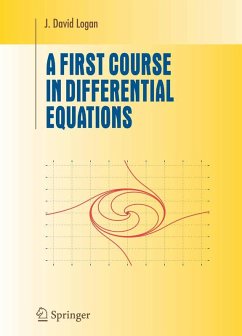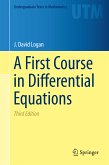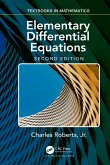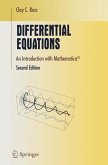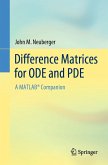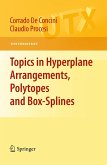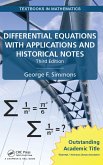Dieser Download kann aus rechtlichen Gründen nur mit Rechnungsadresse in A, B, BG, CY, CZ, D, DK, EW, E, FIN, F, GR, HR, H, IRL, I, LT, L, LR, M, NL, PL, P, R, S, SLO, SK ausgeliefert werden.
"Logan has produced a well-crafted text, densely packed with interesting applications from diverse fields. The chapters cover (ordinary) differential equations, analytical solutions and approximations, second-order differential equations, Laplace transforms, linear and nonlinear systems. The material is well presented and introduces new concepts ... . The text will certainly provide a good mental workout." (Christopher Howls, The Times Higher Education Supplement, November, 2006)
"This is a textbook for those who ... want to learn some methods and techniques to handle mathematical models described by ordinary differential equations. ... the book contains topics which are not included in other similar texts. ... In addition, four appendices are added to complete the presentation ... . The book is written in a pleasant and friendly style. It provides the reader with enough knowledge to engage with more advanced topics of differential equations ... ." (Gheorghe Morosanu, Zentralblatt MATH, Vol. 1088 (14), 2006)
"This text book provides an introduction into ordinary differential equations on a post-calculus level. Its primary goal is a brief and concise ... treatment of the basic ideas, models and solution methods. This goal is reached by a clever selection of the core material. The main text is written in an colloquial and friendly style and supplemented with many exercises and some appendices which among other things cover the use of computer algebra systems as well as solutions to selected exercises." (R. Steinbauer, Monatshefte für Mathematik, Vol. 154 (1), May, 2008)

